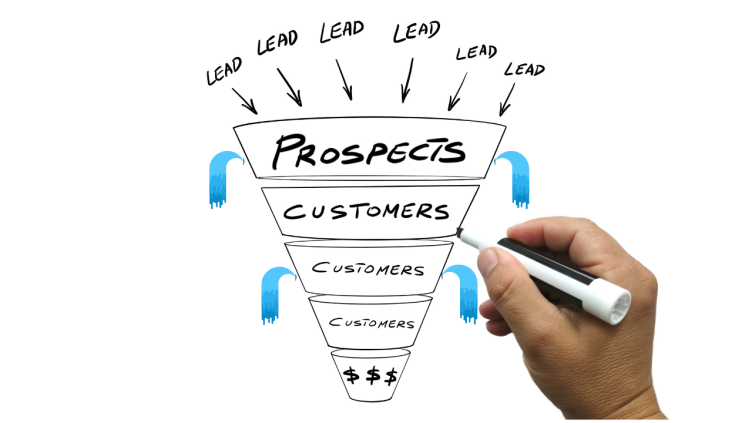The Impact of SMS Marketing: Boost Your Business with Effective Strategies
In today’s digital landscape, where marketers and entrepreneurs are constantly looking for innovative ways to engage their audience, SMS marketing has proven to be a powerful tool. In this blog post, we’ll explore the benefits, strategies, and best practices of SMS marketing to help you unlock the potential of this tool and achieve impressive results for your business.
The Benefits of SMS Marketing
Let’s dive right into the benefits that make SMS marketing a valuable addition to your marketing arsenal:
First and foremost, SMS boasts high open and response rates. With SMS messages having an open rate of around 98% and a response rate of 45%, it’s one of the most effective communication channels available. When you send an SMS, you can be confident that it will be seen and engaged with promptly.

Another advantage of SMS marketing is its instantaneous communication. By delivering messages directly to your audience’s mobile devices, you ensure instant reach and prompt engagement. This immediacy is a game-changer in capturing your customer’s attention and driving them to take action.
Furthermore, SMS marketing offers wide reach and accessibility. Almost everyone carries a mobile phone, making SMS a highly accessible channel. It allows you to reach a broad audience, regardless of demographics or location, ensuring maximum reach for your marketing campaigns.
The cost-effectiveness of SMS marketing is also worth noting. Compared to online ads, SMS campaigns are more affordable while yielding higher conversion rates. This makes SMS marketing a smart investment that provides an excellent return on investment (ROI).
Understanding the SMS Landscape
Before diving headfirst into SMS marketing, it’s crucial to understand the key aspects of the SMS landscape to ensure compliance and build trust with your target audience.
SMS regulations and compliance are essential. Familiarize yourself with the rules and regulations that govern SMS marketing, including opt-in and opt-out requirements. When you comply with these regulations, you not only comply with the regulations, but you also build trust with your subscribers.
Speaking of opt-ins and opt-outs, obtaining explicit consent from your subscribers is vital. Implement clear opt-in processes and provide easy-to-use opt-out mechanisms to respect your audience’s preferences. Transparency and consent are the pillars of building trust and maintaining a healthy subscriber list.
It’s important to differentiate between promotional and transactional messages. Promotional messages are designed to market products or services, while transactional messages are related to specific transactions or interactions with your business. Understanding this distinction helps you create targeted and relevant messages that comply with regulations and prevent overloading your subscribers.
To maintain compliance and build customer trust, adopt best practices such as transparent communication, clear privacy policies, and regular updates. These practices not only help you stay on the right side of the law but also foster a positive relationship with your audience.
Building an SMS Subscriber List
Now that we’ve covered the foundation, let’s move on to building a strong SMS subscriber list.
To entice your audience to subscribe, create compelling opt-in incentives. Exclusive discounts, early access to new products, or valuable content can be powerful motivators. Craft opt-in incentives that align with your audience’s interests and needs to attract more subscribers.
Implement sign-up forms on various touchpoints, including your website, social media platforms, and even within your physical store (if applicable). Ensure these forms are easily visible and user-friendly, making it effortless for visitors to subscribe.
Leverage your existing customer database to invite customers to opt into your SMS campaigns. Send personalized invitations via email or other communication channels, tapping into your existing relationship to maximize conversions.
Throughout the opt-in process, prioritize transparency and obtain explicit consent. Clearly communicate how you plan to use subscribers’ information and ensure they understand and agree to receive SMS communications from you. This transparency builds trust and sets the stage for a positive subscriber experience.
Crafting Effective SMS Campaigns
Now that you have a growing subscriber list, it’s time to craft impactful SMS campaigns that engage your audience and drive desired actions. Here’s how you can achieve that:
Start by defining your campaign goals and identifying your target audience. Understanding what you want to achieve and who you are targeting will help you tailor your messages and offers to resonate with their specific needs and preferences.
Personalization is key in SMS marketing. Use your subscribers’ names, past purchase history, or other relevant data to personalize your messages and create a sense of individualized attention. Personalized messages have a higher chance of capturing your audience’s interest.
Due to character limitations, it’s essential to be concise yet compelling in your SMS messages. Grab attention, convey your value proposition clearly, and include a strong call-to-action (CTA) that prompts recipients to take the desired action.
Speaking of CTAs, ensure they are strong and actionable. Whether it’s a link to a website, a phone number to call, or a keyword to reply with, make it easy for subscribers to understand and follow through. A clear and compelling CTA boosts engagement and conversions.
Timing and frequency play a significant role in SMS marketing success. Consider the preferences and time zones of your audience when scheduling your messages. Additionally, avoid bombarding subscribers with too many messages to prevent opt-outs. Find the right balance for your audience’s preferences.
Automation and Segmentation in SMS Marketing
Automation and segmentation are powerful tools that maximize the effectiveness of your SMS marketing efforts. Here’s how you can leverage them:
- Invest in a robust marketing automation platform that allows you to automate SMS campaigns based on triggers such as sign-ups, birthdays, or abandoned carts. Automation streamlines your campaigns, saves time, and ensures timely and relevant messaging.
- Segment your subscriber list based on demographics, purchase history, engagement levels, or other relevant criteria. By dividing your audience into distinct segments, you can tailor your messages to each group’s unique characteristics, needs, and preferences. Personalized messages drive higher engagement and conversions.
- Tailor your SMS content to each segment’s interests and preferences. Craft messages that speak directly to their needs, highlighting the specific benefits or offers that are most relevant to them. When subscribers receive messages that feel personalized and valuable, they are more likely to respond positively.
- Explore real-life examples of successful automated and segmented SMS campaigns across various industries. Learn from these case studies and adapt their strategies to suit your business goals. There’s much to gain from studying what others have accomplished and applying those learnings to your own campaigns.
Integrating SMS Marketing with Other Channels
To amplify the impact of your SMS marketing efforts, it’s important to integrate SMS with other channels. Here are some strategies to consider:
- Combine SMS marketing with other channels like email, social media, or direct mail to create a cohesive and synchronized customer experience. Coordinate your messaging across channels to reinforce your marketing campaigns and create a unified brand experience.
- Include links in your SMS messages to drive traffic to specific landing pages or your website. By directing recipients to dedicated pages, you can provide more information, promote offers, and encourage conversions. Integrating SMS with your online presence creates a seamless customer journey.
- Pair SMS with email marketing to reinforce your messages. For instance, send follow-up SMS messages to subscribers who haven’t opened or engaged with your emails. This additional touchpoint helps capture their attention and encourages them to take action.
- Promote your SMS campaigns on social media platforms to attract new subscribers. Encourage your followers to opt-in to receive exclusive offers or updates via SMS. This expands your reach, grows your subscriber base, and enhances your overall marketing efforts.
Measuring SMS Marketing Success
To gauge the effectiveness of your SMS campaigns and make data-driven decisions, it’s crucial to measure key performance indicators (KPIs) and track the impact of your SMS marketing efforts. Here’s how you can measure and analyze your SMS marketing success:
- Start by identifying the KPIs that align with your campaign goals. Common SMS marketing KPIs include open rates, click-through rates (CTRs), conversion rates, and overall campaign ROI. These metrics will provide insights into the effectiveness of your campaigns.
- Utilize SMS marketing platforms that provide detailed analytics and reporting. Monitor metrics such as delivery rates, opt-outs, link clicks, and conversions to gain insights into campaign performance. These analytics will help you understand how well your messages are resonating with your audience and which strategies are yielding the best results.
- Explore various SMS marketing tools and platforms that offer comprehensive tracking and reporting capabilities. Choose the ones that suit your needs and provide actionable insights for campaign optimization. These tools will simplify the process of monitoring and analyzing your SMS marketing efforts.
- Analyze the data gathered from your SMS campaigns to identify areas for improvement. Look for patterns, trends, and correlations in the data to gain insights into subscriber behavior and campaign performance. Adjust your strategies, messaging, timing, or segmentation based on the insights gained, continually optimizing your future campaigns.
- It’s important to note that SMS marketing is a dynamic and iterative process. Continuously monitor your KPIs, track the performance of your campaigns, and make data-driven decisions to improve your results over time. Remember, SMS marketing is not a one-size-fits-all approach, so be prepared to adapt and refine your strategies based on the feedback and data you collect.
In Conclusion
SMS marketing presents a powerful opportunity for marketers and business owners to engage their audience, drive conversions, and build lasting customer relationships. By understanding the benefits, best practices, and strategies outlined in this article, you are well-equipped to harness the full potential of SMS marketing for your business.
Remember, successful SMS marketing is built on transparency, personalization, targeted messaging, and strategic integration with other channels. Measure your results, analyze your data, and continuously optimize your campaigns based on the insights gained. With the right approach and a customer-centric mindset, SMS marketing can be a game-changer for your business. Embrace its potential and start reaping the rewards.



